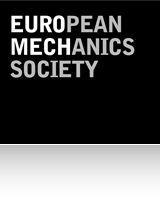654 – Bio-inspired Fluid-Structure Interaction
Chairperson:
Chandan Bose
College of Engineering and Physical Sciences
University of Birmingham
Edgbaston
Birmingham, B15 2TT
United Kingdom
Email: c.bose AT bham.ac.uk
Manuel García-Villalba
Institute of Fluid Mechanics and Heat Transfer
TU Wien
Getreidemarkt 9
1060 Vienna
Austria
Email: manuel.garcia-villalba AT tuwien.ac.at
Co-chairperson
Marco Donato de Tullio
Dipartimento di Meccanica, Matematica e Management,
Politecnico di Bari
Italy
Email: marcodonato.detullio AT poliba.it
Oscar Flores
Aerospace Engineering,
Universidad Carlos III de Madrid
Spain
Email: oflores AT ing.uc3m.es
Ramiro Godoy-Diana
Physique et Mécanique des Milieux Hétérogènes (PMMH)
CNRS, ESPCI Paris–PSL,
Sorbonne Université
Université Paris Cité
France
Email: ramiro AT pmmh.espci.fr
This colloquium will unite active researchers from the fluid dynamics community, specializing in bio-inspired fluid-structure interactions. Lately, there has been a growing trend among researchers to seek inspiration from nature to design engineering systems that incorporate flexible structures. Nature’s flyers and swimmers—such as fish, birds, and insects—exhibit highly efficient mechanisms for manoeuvring through environments dominated by vortices, often leveraging flexibility to enhance propulsion. To that end, studying vortex-dominated lows is pivotal to understanding the aerodynamics and hydrodynamics of both natural and engineered systems.
Investigating the ideal equilibrium between flexibility and structural integrity is key to improving the efficacy of bio-inspired designs. Exploring flexible materials and structures that can adjust to changing flow conditions is at the forefront of current research. The knowledge acquired from examining vortex-dominated flows around bio-inspired structures finds applications across diverse sectors, including aerospace, marine engineering, and renewable energy. Insights from the locomotion of birds and fish, for instance, can be utilized to enhance the efficiency of drones and underwater vehicles and can also serve as inspiration for the development of novel energy harvesting devices.
This colloquium aims to be a pivotal platform for fostering and strengthening collaborations among researchers focused on the unsteady flow physics of flexible structures. The program will be crafted to promote collaboration, facilitate knowledge exchange, and pave the way for future joint research endeavours. A 3-day format with ample time reserved for informal discussions and other group activities has been chosen to maximize engagement and discussions between the attendees
